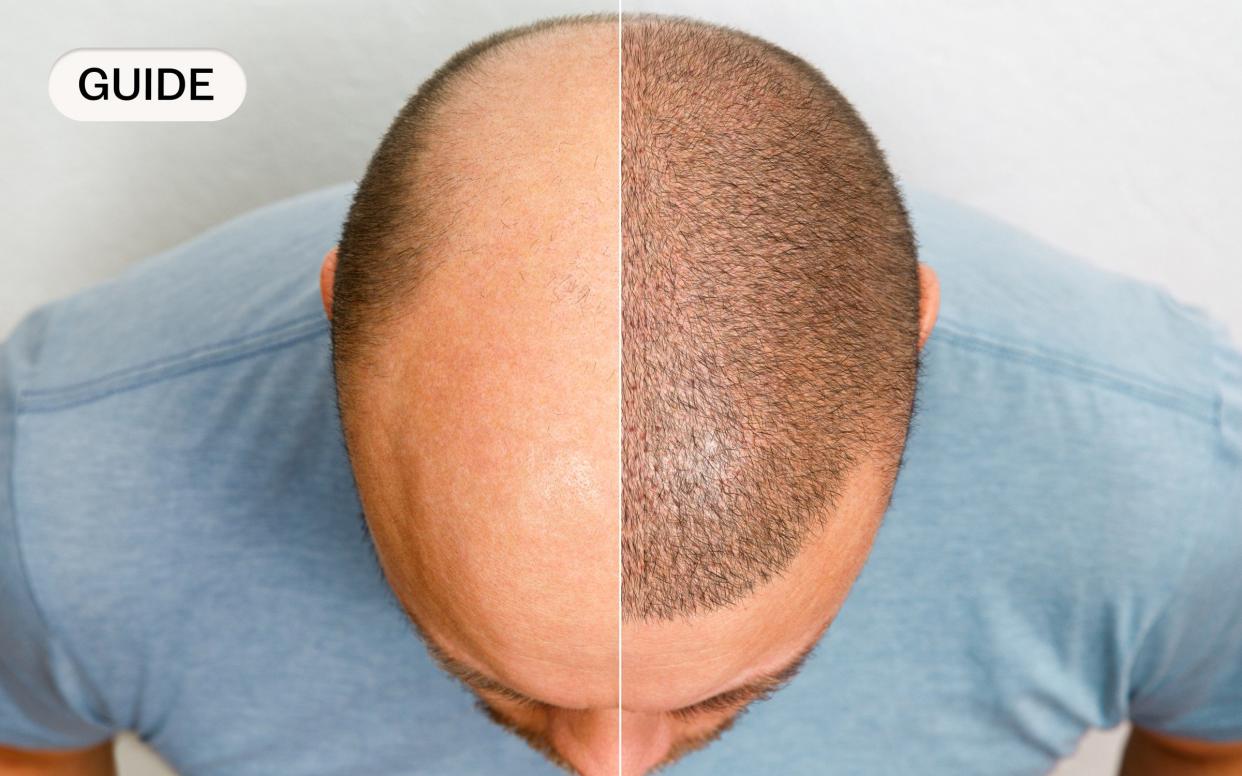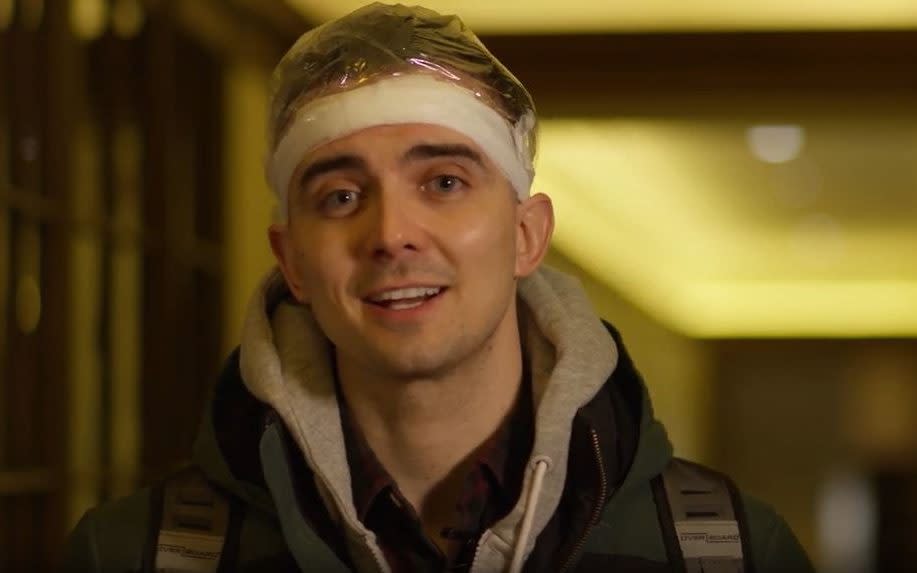What every man should ask before he has a hair transplant

Back in 2011, Wayne Rooney put hair transplantation on the map when he talked publicly about having the procedure.
It reportedly cost up to £30,000, and while some criticised him for vanity and extravagance, for others it was a source of hope that hair loss could be averted. Rooney himself was pleased with the outcome. “I was going bald at 25, why not? I’m delighted with the result,” he posted on Twitter.
Twelve years later and the procedure has become much more normalised. Thousands of people are undertaking the surgery worldwide, and stars including James Nesbitt, Jimmy Carr and Joel McHale have spoken candidly about their hair transplants, while experts can point to dozens of others who have been less forthright.
Countries such as Turkey have opened the surgery up to more people by slashing the cost. You can find a hair transplant in Istanbul from £1,500, and some estimate that 1.5-2 million tourists per year visit Turkey for the procedure, as well as dental and cosmetic surgery.
“Hair transplant surgery has few complications and you can get a massive aesthetic difference,” says Christopher D’Souza, president of the British Association of Hair Restoration Surgery and founder of The D’Souza Clinic, a leading London hair-loss clinic.
“The majority of people I’ve worked with tell me that it has been life-changing,” says D’Souza, who has specialised in the field for nine years. “People who used to spend ages rearranging their hair to hide baldness tell me they don’t think about it at all any more.”
Thanks to advances in technology, hair transplants are safer and easier than they have ever been, thinks Michael Mouzakis from The Private Clinic of Harley Street. “Hair restoration surgery has come on dramatically in recent years. Hair transplant procedures have been difficult to carry out in the past, but with new technology, patients can expect better healing and less visible scars.”
But are hair-loss surgeries safe? Do they work? Is it worth spending the money and what kind of difference can it make? We asked some leading experts.
Who can get a hair transplant?
“People who have had no hair since birth are not suitable candidates as the surgery is performed by taking hair follicles from one part of the scalp to another,” says Mouzakis. “We also recommend that patients are at least 27 years old so we can better determine the pattern of baldness to accurately perform the treatment and help counteract further baldness.
“Patients with health conditions such as heart disease or kidney failure may not be suitable for surgery, as well as those who react to anaesthetics. Patients with blood diseases are also not suitable,” Mouzakis continues. “However, beyond that, anyone else can get a hair transplant.”
How does a hair transplant work?
“A hair transplant fills in the gaps where your hair has receded by taking hair follicles from the back and sides of your head and inserting them into other parts of the scalp,” says D’Souza. “Body-hair transplantation is possible – from the chest, armpits, back or abdomen. It’s a different type of hair and doesn’t look great, so that should only be a last resort.
“There are two main methods: follicular unit transplantation (FUT, sometimes known as linear strip excision) and follicular unit extraction (FUE).
“With FUT you take a thin strip of donor follicles from the back of the head, dissect it into individual follicles and implant those. FUT allows you to extract a lot of donor follicles in one go but it does leave a scar in a line. Some say that FUT offers higher quality but there isn’t much difference.
“FUE is the technique of choice these days – 90 per cent of my patients do it. That involves taking out individual follicles one by one. You can space out where you’re taking the follicles from so you don’t have that scar at the back. Whereas with FUT you have to wear your hair at a certain length to cover the scar, you don’t need to do that with FUE.
“Either way, you transplant those hair follicles into the areas that have gone bald in order to recreate the most natural hairline possible. You will never have enough donor follicles to cover the whole of your head – all we do is fill in gaps.”
Is a hair transplant permanent?
“Yes, the donor follicles that we take from the back and sides of your hair have a slightly different genetic profile, so they are permanent,” D’Souza explains. “Hair will grow as normal and it’ll go grey as normal. Initially it might be frizzy, but it’ll gradually blend in. It is never too dense so you have to wear it to a certain length to get maximum coverage.”
What are the side effects of having a hair transplant?
“There aren’t really any side effects, though if you don’t keep up the health of the rest of your hair it can look a bit unnatural,” says D’Souza. “You can get folliculitis – inflammation of the follicles. You can also get a few little lumps and bumps at the back of the head but that usually clears up within one or two months.”
What is the recovery time for a hair transplant?
“A week off work is good, but two weeks is better if you don’t want people to pay attention,” says D’Souza. “In the first five days, you mustn’t touch the grafts. You have to sleep with a neck pillow to keep them elevated.
“By day five, the swelling comes down and you see the grafts coming through. What you’re interested in is the bulb, which sits 3.5-4mm under the scalp. After two or three weeks, the top part of the hair detaches from the bulb so it feels like all your hair is falling out again, but that’s normal. There’s a dormant phase and then new growth comes through.
“The milestones are six, 12, and 18 months. You’ll have about 50 per cent of the result by six months, 90 per cent by 12 months, and it gets better from there.”
How much does a hair transplant cost?
Most clinics charge by the number of grafts, and prices vary by individual clinics. London prices are generally higher than anywhere else in the UK. A standard number of grafts might be 1,500 to 2,000, for which D’Souza would charge £7,000-£8,000, but you can find it for as much as £12,000 or as little as £3,000 elsewhere.
Is it cheaper to go abroad for a hair transplant?
“There are a lot of brokers in the UK representing surgeons overseas, offering packages as cheaply as £1,500 including accommodation,” says D’Souza. “Some people have great results when they go overseas, but it’s usually one surgeon with five or six patients per day, so it’s not the same level of care. Sometimes they use non-medical staff to do medical procedures. People think, ‘What’s the worst that can happen?’ but it can be bad.”
“There are, of course, first-class surgeons abroad who will do an excellent job, but that isn’t the point as the recovery period is important,” adds Mouzakis. “Complications can occur with any surgery. The issue is how to manage them if they do occur. If you go abroad and come back home, they cannot be managed properly.”
In 2019, the International Society of Hair Restoration Surgery launched a campaign to raise awareness of black-market hair restoration clinics, especially in Turkey and Iran.

Are there any risks in going abroad?
“We’re often told patients don’t meet the surgeon until the day of surgery and are offered something different to what the broker said,” explains D’Souza. “You might have been quoted for 4,000 grafts and your donor area can’t support that, but by the time you’ve got there you go with it because you don’t want a fuss. That may lead to an unnatural hair line.
“Some people come back with a low, straight hairline rather than the natural way hair grows and it looks crazy. I’ve seen cases where the hairs were put in perpendicular, when they should be at 30 degrees or so. The only way to repair those is to punch the grafts out and re-transplant them back in, which is expensive and a hassle.
“The worst that can happen is necrosis: death of the skin tissue from overharvesting or overpacking transplanted grafts. You’ll have horrible scars, and never have hair there again.”
Does the hair transplant procedure hurt?
“We give anaesthetic to numb the scalp before we start, so the rest of the day is pain-free,” assures D’Souza. “We give patients a high-strength painkiller for the first few days too, but after that you won’t feel anything. It might itch once the scars start healing but that’s it.”
Will I be able to swim and exercise with my new hair?
“In the first five days we say no exercise, on days 6 to 14 keep your heart rate under 100 beats per minute, but then you can get straight back to normal,” explains D’Souza. “In the first few months you don’t want to get too much sun to the crafted area because the new area of hair is more sensitive to sun damage, so you can get hypo- or hyperpigmentation in the scalp (skin that has too little or too much pigmentation, making it a different colour to the rest).”
How do you find a reputable hair transplant surgeon?
The British Association of Hair Restoration Surgery has a database of all hair restoration surgeons in the UK, including those fully ratified by the General Medical Council. The International Society of Hair Restoration Surgery fulfils a similar role worldwide.

“There is only one qualification in hair transplant surgery, from the American Board of Hair Restoration Surgery, but very few surgeons in Britain hold it, so it doesn’t necessarily mean you should worry if someone doesn’t have it,” says D’Souza. “Just make sure you have proper hairline design, know the numbers and who’s doing it.”
How can I maintain the health of my hair transplant?
“You’ll be on a drug called finasteride for the rest of your life to look after the hair around the graft. That’s an oral medication that stops the conversion of testosterone to DHT – dihydrotestosterone – which is what causes the weakening and thinning of the hair,” advises D’Souza. “1 to 2 per cent of people have sexual side effects, including decreased libido, erectile dysfunction and feeling low. There’s also a topical solution, minoxidil, which works by stimulating the follicles.”
“Your hair is primarily made of protein, and every day it requires a quarter of your daily intake, so a protein-rich diet is essential,” says leading trichologist Eva Proudman. “But every cell in the body needs protein and hair is a non-essential cell, so it won’t be prioritised if you’re not getting enough. If you’re cutting out food groups or pursuing a more plant-based diet, you’ll be missing both protein and some of the vitamins and minerals needed for healthy hair. I recommend three meals a day, prioritising protein, brightly coloured vegetables they tend to have more minerals) and a little bit of carbohydrates and fat. Smoking is a terrible thing to do if you want to keep your hair healthy. It starves the follicles of the oxygen they need.”
Recommended
My ten-month hair transplant diary


